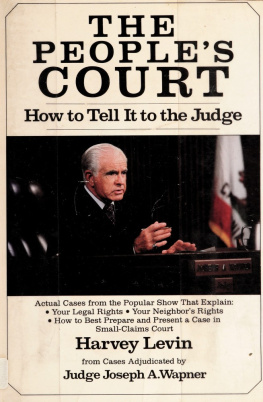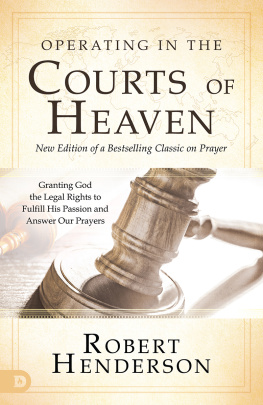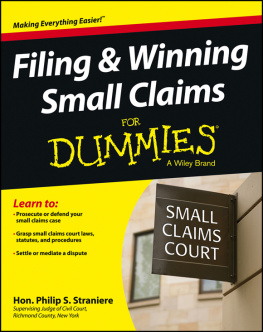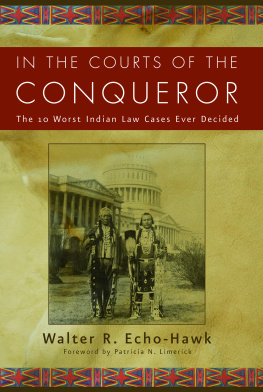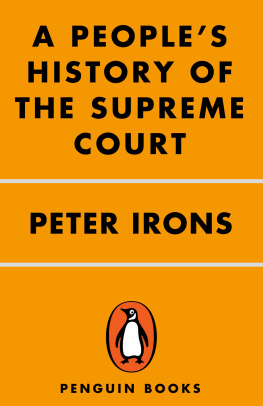Harvey Levin - The Peoples Court: How to Tell It to the Judge
Here you can read online Harvey Levin - The Peoples Court: How to Tell It to the Judge full text of the book (entire story) in english for free. Download pdf and epub, get meaning, cover and reviews about this ebook. year: 1984, publisher: William Morrow & Co, genre: Detective and thriller. Description of the work, (preface) as well as reviews are available. Best literature library LitArk.com created for fans of good reading and offers a wide selection of genres:
Romance novel
Science fiction
Adventure
Detective
Science
History
Home and family
Prose
Art
Politics
Computer
Non-fiction
Religion
Business
Children
Humor
Choose a favorite category and find really read worthwhile books. Enjoy immersion in the world of imagination, feel the emotions of the characters or learn something new for yourself, make an fascinating discovery.
- Book:The Peoples Court: How to Tell It to the Judge
- Author:
- Publisher:William Morrow & Co
- Genre:
- Year:1984
- Rating:5 / 5
- Favourites:Add to favourites
- Your mark:
- 100
- 1
- 2
- 3
- 4
- 5
The Peoples Court: How to Tell It to the Judge: summary, description and annotation
We offer to read an annotation, description, summary or preface (depends on what the author of the book "The Peoples Court: How to Tell It to the Judge" wrote himself). If you haven't found the necessary information about the book — write in the comments, we will try to find it.
The Peoples Court: How to Tell It to the Judge — read online for free the complete book (whole text) full work
Below is the text of the book, divided by pages. System saving the place of the last page read, allows you to conveniently read the book "The Peoples Court: How to Tell It to the Judge" online for free, without having to search again every time where you left off. Put a bookmark, and you can go to the page where you finished reading at any time.
Font size:
Interval:
Bookmark:

Levin, Harvey;Wapner, Joseph A
This book was produced in EPUB format by the Internet Archive.
The book pages were scanned and converted to EPUB format automatically. This process relies on optical character recognition, and is somewhat susceptible to errors. The book may not offer the correct reading sequence, and there may be weird characters, non-words, and incorrect guesses at structure. Some page numbers and headers or footers may remain from the scanned page. The process which identifies images might have found stray marks on the page which are not actually images from the book. The hidden page numbering which may be available to your ereader corresponds to the numbered pages in the print edition, but is not an exact match; page numbers will increment at the same rate as the corresponding print edition, but we may have started numbering before the print book's visible page numbers. The Internet Archive is working to improve the scanning process and resulting books, but in the meantime, we hope that this book will be useful to you.
The Internet Archive was founded in 1996 to build an Internet library and to promote universal access to all knowledge. The Archive's purposes include offering permanent access for researchers, historians, scholars, people with disabilities, and the general public to historical collections that exist in digital format. The Internet Archive includes texts, audio, moving images, and software as well as archived web pages, and provides specialized services for information access for the blind and other persons with disabilities.
Created with abbyy2epub (v.1.6.7)
Actual Cases from the Popular Show That Explain:
Your Legal Rights Your Neighbors Rights
How to Best Prepare and Present a Case in
Small-Claims Court
COURT
from Cases Adjudicated by
Judge Joseph A.Wapner




PEOPLES
COURT

To my parents
. ,1 ->
>
Digitized by the Internet Archivein 2018 with funding fromKahle/Austin Foundation
https://archive.0rg/details/peoplescourthowtOOOOIevi
Tens of millions tune in daily to watch real-life dramas unfold on the People's Court television show. Dozens of thebest of these cases have been brought together in this book,which, like the show, will teach you how to protect and enforce your legal rights while providing edifying entertainment.
If you have a mischievous pet, an unreasonable landlord,a defective toaster, a lousy painter, or a turncoat friend whowon't repay a loan, this book is for you. Cases like "P.S., IHit Your Car," "Does Your Dog Bite, Mister?," and "Abuseat the Apartment" will teach you your legal rights, the reasons for the court's decisions, and common mistakes madein preparing and presenting cases in small-claims court. Included are the common legal hassles people care about most,like auto accidents, problems with pets, defective products,personal injuries, neighborhood feuds, and many others.
The way life is, even if you don't have any problems to
PREFACE
day, it's a good bet you'll have some soon. But when youknow your legal rights, and what you can and cannot expectfrom others, you may be able to keep your problems fromturning into legal battles. This book gives you enough information to resolve many everyday disputes without going tocourt.
The laws that you'll read about apply in most states. Somestates' laws have certain quirks, but the basic rules of the gameare the same everywhere.
All the legal points in the book are illustrated by People'sCourt casesmany of them humorous, some outrageous, butall real. The litigants on the show aren't actors reenacting aprocedure. Every case that's heard on the show was originally filed in small-claims court. The People's Court employsresearchers who comb small-claims-court files in SouthernV California, looking for interesting cases. Litigants who qualify are asked to present their arguments on the show and todismiss their cases in small-claims court. In effect. The People's Court is binding arbitration. The parties agree to abideby Judge Joseph A. Wapner's rulings.
Many of the litigants contacted want to have their casesheard on the show. Their reasons vary. On The People's Court,judgments are settled immediately after the decision; in small-claims court, litigants may have a modest wait before a judgment is rendered. Some defendants find the show attractivebecause it pays the judgment. But as anyone who watchesthe show knows, most people aren't just fighting to resolvea disputethey're trying to make a point. What better wayto make a statement about a contractor who didn't do thejob, a friend who hasn't repaid a loan, or parent who won'ttake responsibility for his child's misconduct than to have yourdispute heard on television?
In point of fact, most litigants forget the case is on television. The cameras are hidden from view. What the litigants
PREFACE
do see is Judge Wapner, who has had twenty years of experience in resolving lawsuits, judge Wapner served for overtwo decades as a Los Angeles County judge of civil andcriminal cases. He began his career on the bench with a stintin the municipal court, where, ironically, his first assignmentwas the small-claims court. This was followed by his assignment to the superior court, where he served as presiding judge.Litigants trust this distinguished jurist, and they generally accept his rulings, favorable or not.
Judge Wapner says that the series can be educational aswell as entertaining, because he's given the chance to explain his decisions to the litigants (and to the general public),a luxury for which there's no time in small claims. In thisbook, it has been possible to provide even more backgroundon the law and the reasons for each decision.
These cases will make you mad, they'll make you laughout loud, and they'll make you street smart about the lawsthat affect your everyday life.
Harvey Levin

The People's Court is not my first exposure to small-claimscourt. One of my first assignments as a judge, more thantwenty years ago, was small claims.
But even before I became a lawyer, I regularly appearedin small-claims courtas a plaintiff. As an assistant creditmanager of a retail jewelry store, it was my responsibility torepresent the company in small-claims court.
My first case involved a woman who had purchased a chestof silver on a conditional sales contract. She failed to makeher payments, so we sued for the balance due on the contract. The judge in the case was Orfa jean Shontz. When thedefendant brought the chest of silver into court, judge Shontzturned to me and said, '"Mr. Wapner, this lady can't affordto pay the balance due on the contract. You take the chestof silver that she is offering and I'll dismiss the case." Thatcase made an everlasting impression on me, because it was
Next pageFont size:
Interval:
Bookmark:
Similar books «The Peoples Court: How to Tell It to the Judge»
Look at similar books to The Peoples Court: How to Tell It to the Judge. We have selected literature similar in name and meaning in the hope of providing readers with more options to find new, interesting, not yet read works.
Discussion, reviews of the book The Peoples Court: How to Tell It to the Judge and just readers' own opinions. Leave your comments, write what you think about the work, its meaning or the main characters. Specify what exactly you liked and what you didn't like, and why you think so.

